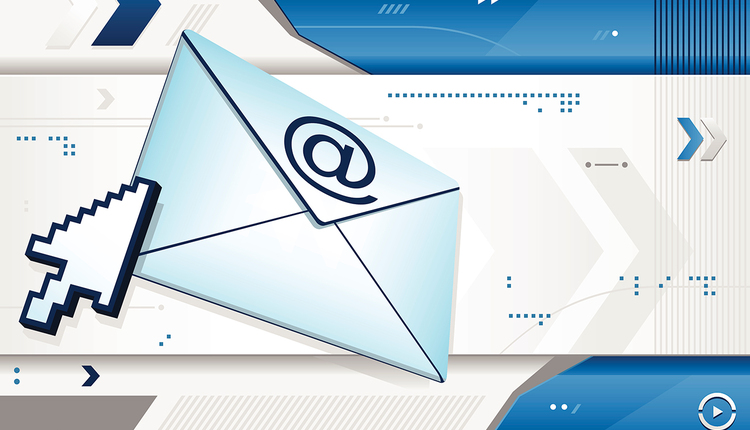Fewer than 10 years ago, most mail centers were processing mail and packages by hand. However, an era of e-commerce and data-driven technology emerged, creating an exponential increase in purchase orders and package volumes, resulting in more misrouted items and an inability to close the accountability loop. In addition, more sophisticated requirements became a necessity as mail center managers were left to find solutions to address incoming supply and shipment requests, higher call volumes, and more stringent delivery expectations.
Logically, these managers looked to package tracking companies to satisfy their needs and as a result, many package tracking software systems studied these demands and created tools to work in tandem with the average package tracking system, elevating the offering into an all-encompassing campus logistics solution.
Five Questions to Ask Yourself when Optimizing Your Mail Center
1. Does your software vendor offer an integrated desktop shipping solution?
While it is important to have tools to manage incoming packages, it is also crucial to have a game plan for outgoing packages as well. Desktop shipping is a game changing tool for mailroom managers because it allows employees the ability to set up shipping for their outgoing packages. This function is available in most package tracking systems and only requires the shipper to fill out the necessary ship-to information. The shipper is able to compare carrier services in order to select the most cost effective shipping method. With the help of a built-in address book, mailrooms can complete accurate shipments in less time. In addition, mailroom managers are able to analyze post-shipment costs, which in turn helps them meet delivery requirements without overspending.
2. Can the software also track items such as copy jobs, equipment, or visitors?
Service request forms are a substantial time saver for mail centers and even entire supply chains and function exactly like how the name suggests. These forms allow employees to submit any request-related task, job, asset, or service in an electronic format. The requestor simply selects the desired form, fills out the required information, and submits it. An automatic notification is sent to the mail center to be fulfilled. All submitted forms are tracked by status, like the package tracking software they are built on, until they are completed. Service request forms aid in avoiding last minute mishaps, allowing regulation of materials for better operations oversight, as well as ensuring tasks are being completed on time in order to meet service level agreements (SLAs).
3. Can the software track multiple variables such as PO number, department, etc.?
Increasing package volumes tend to correlate to an increase in purchase orders. Utilizing the P.O. line item receiving function in your tracking system not only saves time, but also closes the accountability gap completely. This functionality provides a single user interface for receiving, logging and closing purchase orders when integrated with the company purchasing system.
4. Can your package tracking system handle integrations?
Implementing a locker system is a great way to repurpose some of the space the mailboxes used to occupy. Locker management is the pairing of an intelligent locker solution with a package tracking software system. Instead of storing packages on a shelf until someone comes to pick them up, they are instead assigned and placed into a locker. Once the package is placed in the locker, an email or text notification is sent to the recipient with a unique access pin code. The recipient is then able to swipe their ID or enter their pin code to retrieve their packages from that locker. A locker system not only frees up package storage space, but it also reduces lines and staff required to process and hand out packages.
5. Can all users/recipients view the status/location of an item at any given time?
The last tool is not only helpful for the mail center, but also for the employees of the organization. A centralized client-facing portal is the essential hub where all these tools come together. A customer portal is also a powerful, yet user-friendly search and metrics tool for all to use. It manipulates data pulled in from all package and service-related transactions. The portal is a centralized location for employees to search for packages, request services, ship a package, or set up office alerts. The advanced search functionality within many customer portals allows users to search based on any variable tied to a particular package or service. For example, a user could search by status, sender, recipient, type, condition, carrier, and any other variable defined in the package tracking system. This function alone eliminates the, “where’s my package,” call. In addition, mail center managers can access an analytics dashboard detailing operations throughout the day as well as built-in reports based on key performance indicators. Based on the real-time data, managers can track deliveries, quickly and easily assign tasks to employees to optimize performance, view the statuses of incoming service requests, and ensure the mail center is meeting all service level agreements (SLAs).
Bruce E. Little is SCLogic's Vice President of Emerging Markets. Founded in 1996, SCLogic is a leading provider of innovative campus logistics software systems that leverage the latest barcode scanning, printing, mobile computing and wireless technologies. The company has thousands of enterprise, government, and university users around the world. For more information about SCLogic, please visit www.SCLogic.com. Bruce can be reached at 1.888.700.7027 and blittle@sclogic.com.







![GettyImages-1137343205-[Converted]](https://cms-static.wehaacdn.com/mailingsystemstechnology-com/images/GettyImages-1137343205--Converted-.1303.widea.0.jpg)








